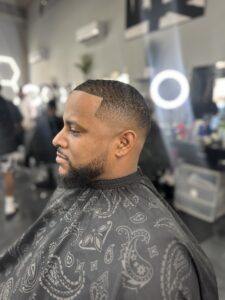The fashion industry has long been a dynamic and profitable sector, constantly evolving to meet the ever-changing demands of consumers. In particular, women’s fashion has become a powerhouse, driving trends, innovation, and substantial revenue growth globally. This segment holds a unique place in the industry, benefiting from a broad range of demographics, interests, and styles, which continuously fuel demand.
With increasing purchasing power among women, the market has grown exponentially. Brands, both established and emerging, invest significantly in creating products and services that align with women’s desires for style, comfort, and individuality. From clothing to accessories, the scope of the industry is vast, making it a lucrative field for investors, designers, and entrepreneurs alike.
Furthermore, with the rise of e-commerce and social media, women’s fashion is now more accessible and customizable than ever. This accessibility not only drives sales but also allows brands to connect with a global audience. As a result, women’s fashion remains one of the most attractive and profitable sectors, offering numerous opportunities for those looking to enter or expand in the fashion business.
High Consumer Demand and Market Stability
One of the primary reasons women’s fashion is a lucrative business lies in its consistent demand. Women are traditionally more engaged in fashion shopping, spending significantly on apparel, shoes, and accessories. This steady demand creates a reliable market, which is less volatile compared to other sectors where trends may shift abruptly. Seasonality in fashion, including spring/summer and fall/winter collections, ensures that the market remains active year-round, allowing businesses to sustain revenue over time.
Moreover, women often seek variety and exclusivity, which drives repeat purchases. This repeat buying behavior is a critical factor, ensuring a loyal customer base that returns regularly for new releases and trend updates. In addition, women’s fashion has segments for every budget, from luxury to fast fashion, making it accessible to a broad range of consumers. This adaptability across price points reinforces market stability and appeals to various income groups.
The industry, like agência de marketing, is also bolstered by the growing trend toward personalized and curated shopping experiences. Companies that offer customization, whether through tailored fits or unique styles, can attract a dedicated following. This type of targeted, consumer-centric approach ensures that demand remains high, creating a stable environment for businesses.
Finally, fashion is an expression of identity, and for many women, clothing and accessories play a significant role in self-expression. This deeply rooted connection between fashion and personal identity means the demand for women’s fashion is resilient, adapting to cultural, social, and generational shifts, thus sustaining a stable market for long-term investment.
Opportunities for Niche Markets and Diversity
The vast diversity within the women’s fashion market allows businesses to target specific niches, whether they are based on lifestyle, body type, or even cultural heritage. This diversity offers a distinct advantage, as businesses can cater to the unique needs of different groups, from plus-size fashion to eco-friendly apparel, thereby tapping into underserved markets.
Sustainable fashion, for instance, has seen rapid growth, particularly among conscious consumers who prioritize environmental and ethical considerations. Brands that focus on eco-friendly materials or ethical labor practices have found loyal followings, setting them apart in a crowded marketplace. Similarly, there is a growing demand for inclusive fashion lines that represent a wide range of body types and identities, opening doors for brands that value inclusivity.
The women’s fashion industry also benefits from the demand for fashion catering to different cultural backgrounds like criador de conteúdo digital. Many businesses have successfully developed lines that celebrate traditional attire with a modern twist, which appeals to consumers seeking clothing that reflects their heritage. This type of niche targeting allows businesses to resonate deeply with specific audiences.
In addition, the popularity of athleisure, which combines comfort and style, demonstrates the potential for targeted market segments. By focusing on a specific niche, companies can build strong brand identities and cultivate a loyal customer base that is likely to support and recommend their products.
E-commerce and Digital Marketing Advantage
The rise of e-commerce has revolutionized the women’s fashion industry, making it easier than ever for brands to reach a global audience. Online platforms allow businesses to showcase extensive collections and provide customers with a seamless shopping experience, regardless of their location. This digital transformation reduces operational costs, allowing brands to allocate more resources to marketing, product development, and customer engagement.
Social media platforms like Instagram and Pinterest play a pivotal role in women’s fashion, enabling brands to showcase styles, engage directly with consumers, and build a strong online presence. Influencer marketing, for example, has become a powerful tool, as consumers trust the recommendations of influencers they follow. These digital strategies have proven effective in increasing brand visibility and driving sales.
Furthermore, online shopping platforms offer valuable insights into customer preferences, enabling brands to tailor their offerings to meet specific demands. Advanced data analytics tools can track buying patterns, allowing businesses to optimize inventory, plan future collections, and personalize marketing efforts. This data-driven approach provides a competitive edge and improves customer satisfaction.
The e-commerce landscape also allows smaller brands to compete with established names, leveling the playing field. Through targeted ads, search engine optimization, and social media campaigns, even emerging brands, can capture a significant share of the market, thus making e-commerce a significant contributor to the success of the businesses.
High Profit Margins and Scalability
Compared to other retail sectors, women’s fashion tends to have higher profit margins, especially for brands that manage to establish a strong reputation or a loyal following. High margins provide businesses with flexibility in pricing and promotion, which is essential for growth and sustainability. Furthermore, with a global supply chain, fashion businesses can often reduce production costs, boosting profitability.
Scalability is another advantage. Fashion brands can expand their product lines, enter new markets, music branding, or create brand extensions relatively easily. For instance, a brand initially focused on clothing can later introduce shoes, accessories, or even lifestyle products under the same label, tapping into an existing customer base and leveraging brand loyalty.
Subscription models, such as monthly styling boxes or membership-based sales, have gained popularity and allow businesses to ensure regular revenue streams. This approach also enhances customer retention, as subscribers are more likely to stick with a brand that curates new items for them on a recurring basis.
Additionally, collaborations with designers, celebrities, or other brands offer lucrative avenues to create limited-edition collections. These collaborations often generate buzz and attract customers, boosting sales and enhancing brand image. This flexibility and ability to scale make women’s fashion a profitable and adaptable industry.
The Influence of Trends and Cultural Movements for Women’s Fashion
Women’s fashion is highly influenced by social and cultural movements, making it an ever-relevant sector that adapts to changing tastes and values. For example, the push toward body positivity and gender inclusivity has shifted the industry, encouraging brands to adopt more inclusive approaches in their offerings and marketing campaigns. As these cultural movements gain momentum, they drive demand for products that align with these values, opening new doors for businesses to innovate and appeal to modern consumers.
Fashion also reflects lifestyle shifts, such as the increase in remote work and the subsequent demand for comfortable, professional clothing for home offices. Brands that stay attuned to these shifts can adapt their offerings to stay relevant, ensuring they meet customers’ needs. This alignment with cultural changes allows brands to resonate deeply with consumers, fostering brand loyalty.
Moreover, trends in celebrity and influencer fashion significantly impact the women’s fashion market. When high-profile individuals endorse specific styles or brands, these trends often go viral, rapidly increasing demand. Fashion brands that collaborate with influencers or adopt these trends into their collections can capitalize on these momentary boosts, driving significant traffic and revenue.
Finally, global fashion weeks and other major events provide regular opportunities to showcase new styles and reach wider audiences. These events not only shape seasonal trends but also generate international visibility, making them crucial for fashion brands aiming to maintain relevance and grow their market share.
Unlocking the Potential of the Women’s Fashion Industry
Women’s fashion presents a robust business opportunity due to its high demand, diversity, adaptability to digital platforms, and strong profit margins. The sector’s responsiveness to cultural and lifestyle changes ensures its ongoing relevance and profitability. From high-end luxury to accessible, budget-friendly options, the market caters to a wide array of consumers, reinforcing its stability.
Entrepreneurs and investors interested in the fashion industry can find significant potential in women’s fashion by identifying unique niches and leveraging digital tools to expand reach. As consumer preferences evolve, brands that stay attuned to trends and maintain flexibility in their offerings will continue to thrive.
Ultimately, the women’s fashion industry is a rewarding field for those willing to innovate and connect deeply with their audience. With thoughtful strategies and a focus on delivering value, businesses can carve out a lasting place in this vibrant, ever-evolving market.









